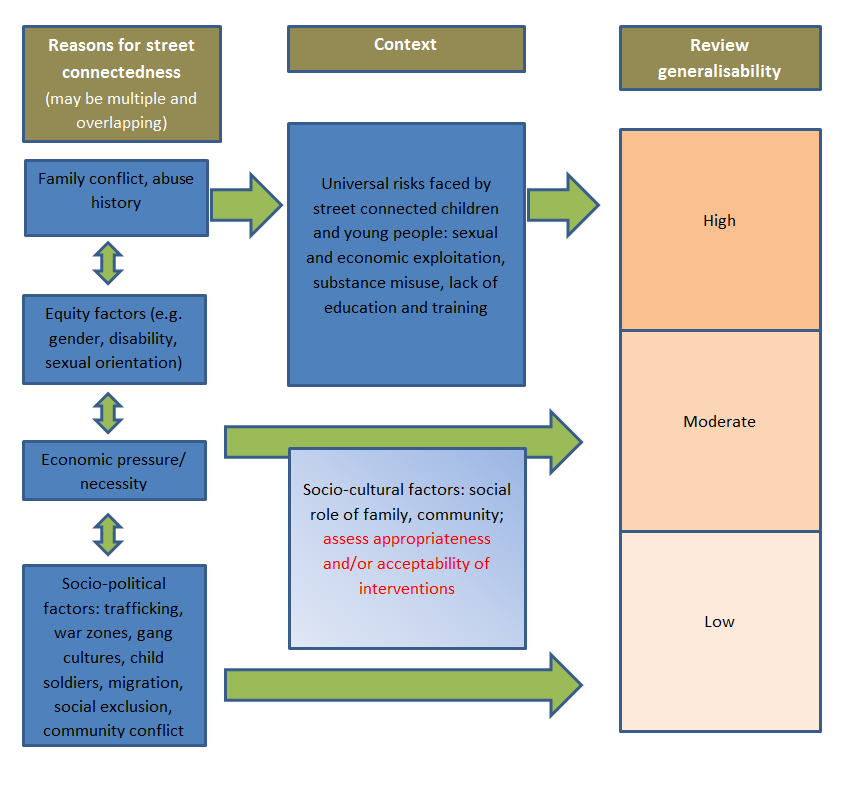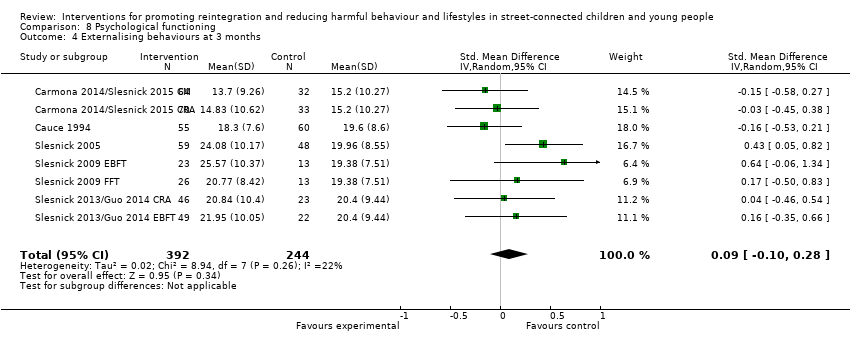Contenido relacionado
Revisiones y protocolos relacionados
Intervenciones individuales, familiares y escolares para conductas de riesgo múltiple en los jóvenes
Georgina MacArthur, Deborah M Caldwell, James Redmore, Sarah H Watkins, Ruth Kipping, James White, Catherine Chittleborough, Rebecca Langford, Vanessa Er, Raghu Lingam, Keryn Pasch, David Gunnell, Matthew Hickman, Rona Campbell | 5 octubre 2018
Chris Noone, Jenny McSharry, Mike Smalle, Annette Burns, Kerry Dwan, Declan Devane, Eimear C Morrissey | 22 mayo 2020
Elaine M Murtagh, Marie H Murphy, Karen Milton, Nia W Roberts, Clodagh SM O'Gorman, Charles Foster | 17 julio 2020
Sarah E Neil-Sztramko, Hilary Caldwell, Maureen Dobbins | 23 septiembre 2021
Marianne E Visser, Anel Schoonees, Chibundu N Ezekiel, Nicola P Randall, Celeste E Naude | 9 abril 2020
Sophie M Goudet, Barry A Bogin, Nyovani J Madise, Paula L Griffiths | 17 junio 2019
Rosa Virgara, Anna Phillips, Lucy K Lewis, Katherine Baldock, Luke Wolfenden, Ty Ferguson, Mandy Richardson, Anthony Okely, Michael Beets, Carol Maher | 27 septiembre 2021
Sebastien Chastin, Paul A Gardiner, Juliet A Harvey, Calum F Leask, Javier Jerez-Roig, Dori Rosenberg, Maureen C Ashe, Jorunn L Helbostad, Dawn A Skelton | 25 junio 2021
Tamara Browna, Theresa HM Moorea, Lee Hooper, Yang Gao, Amir Zayegh, Sharea Ijaz, Martha Elwenspoek, Sophie C Foxen, Lucia Magee, Claire O'Malleya, Elizabeth Waters, Carolyn D Summerbell | 23 julio 2019
Jennifer Petkovic, Stephanie Duench, Jessica Trawin, Omar Dewidar, Jordi Pardo Pardo, Rosiane Simeon, Marie DesMeules, Diane Gagnon, Janet Hatcher Roberts, Alomgir Hossain, Kevin Pottie, Tamara Rader, Peter Tugwell, Manosila Yoganathan, Justin Presseaua, Vivian Welcha | 31 mayo 2021
Respuestas clínicas Cochrane
Sarah R. Davies | 26 septiembre 2016




















































